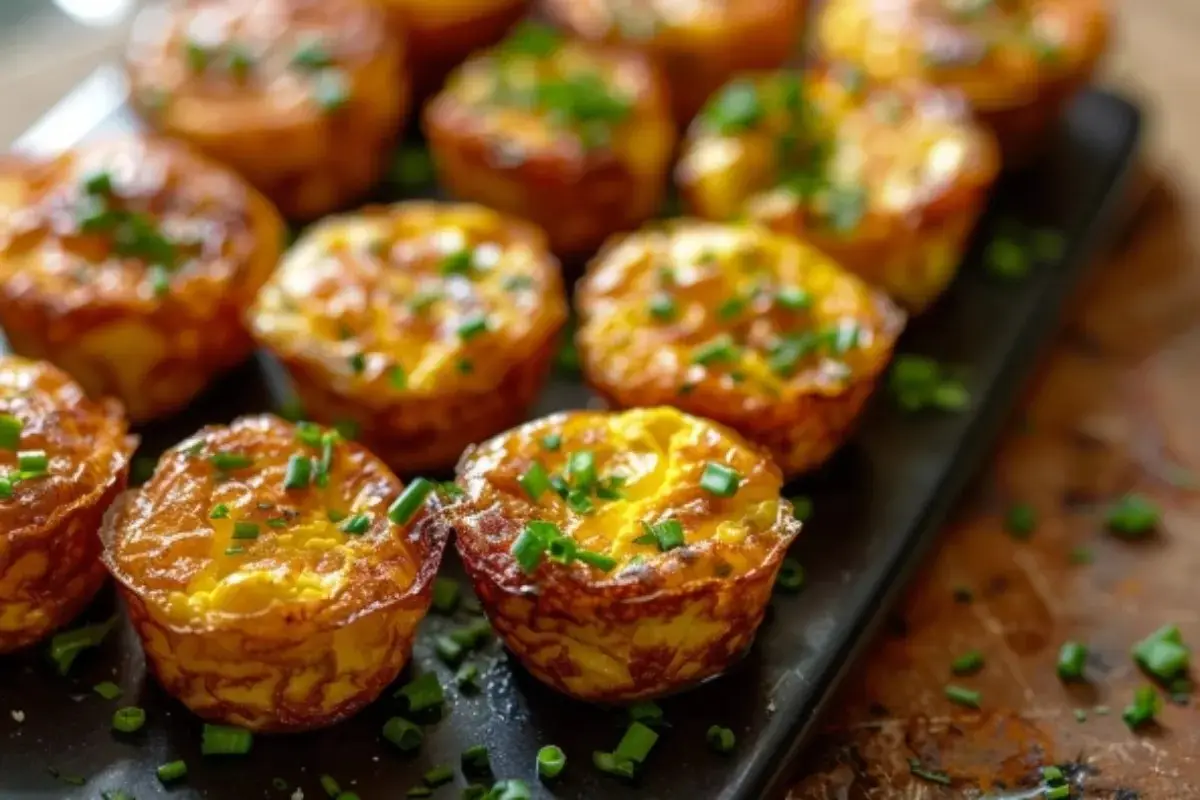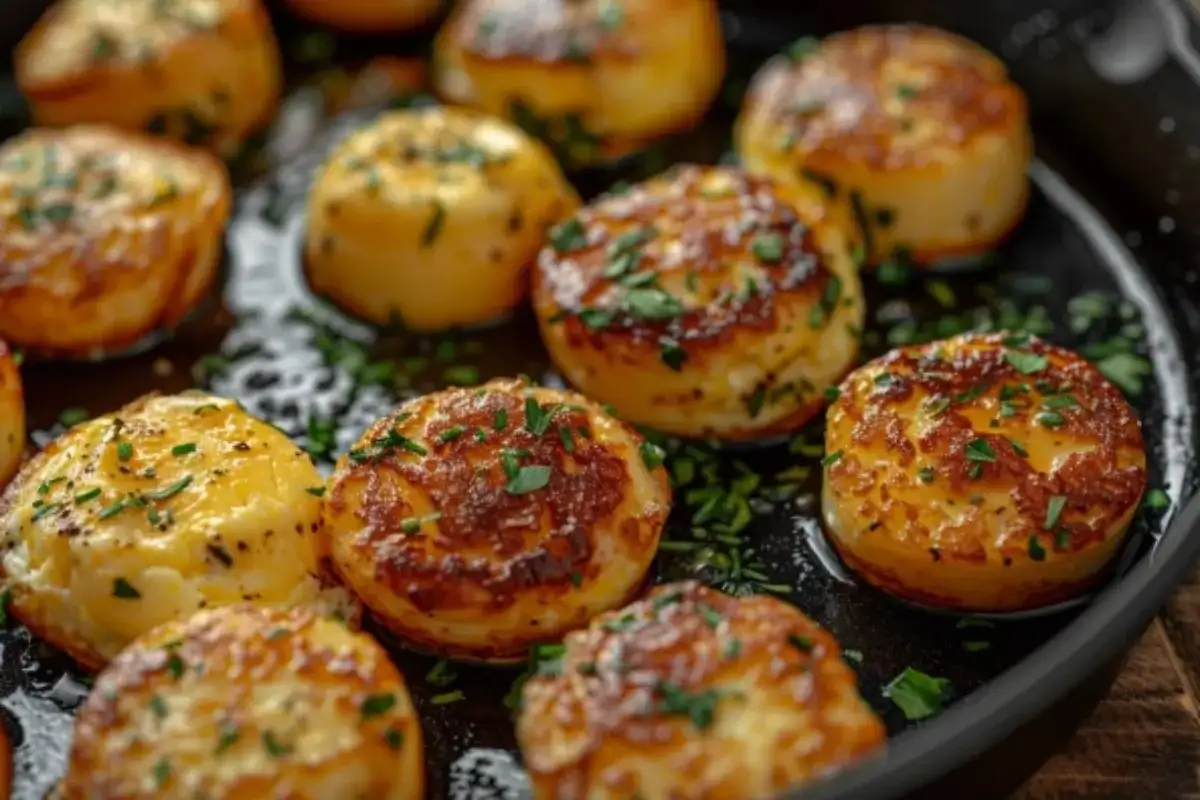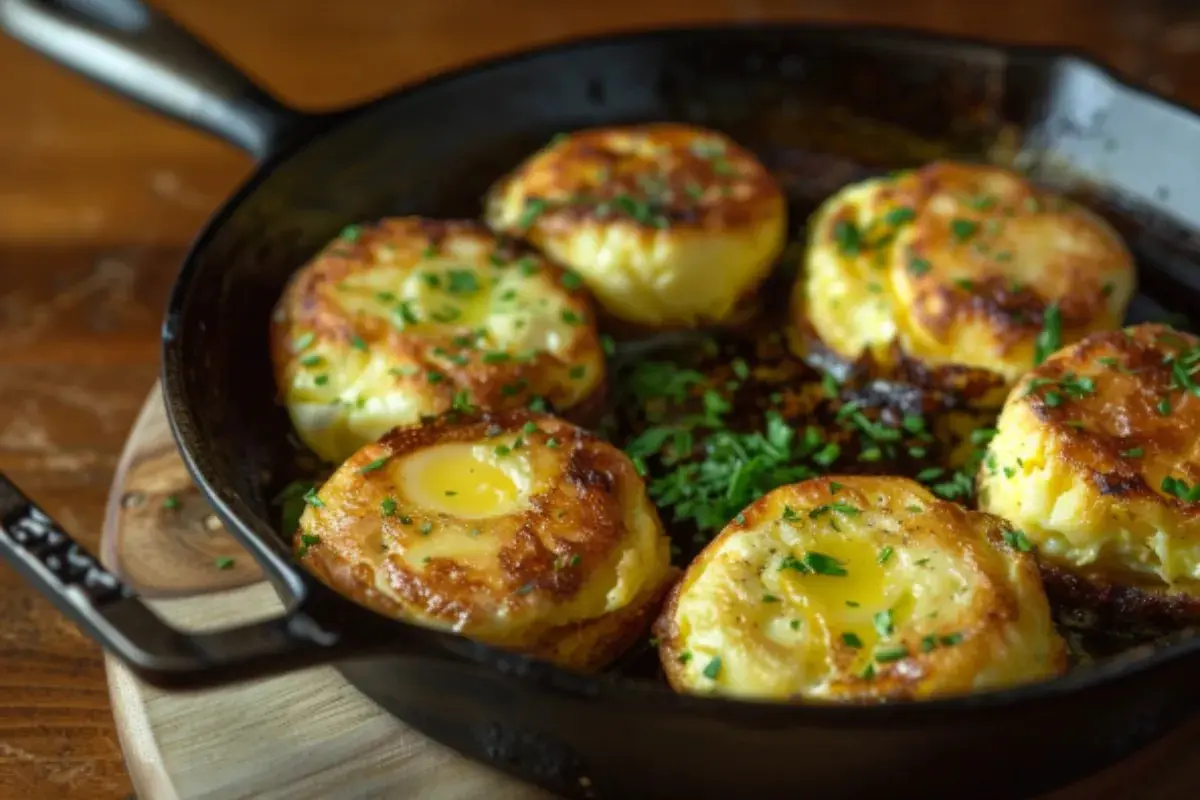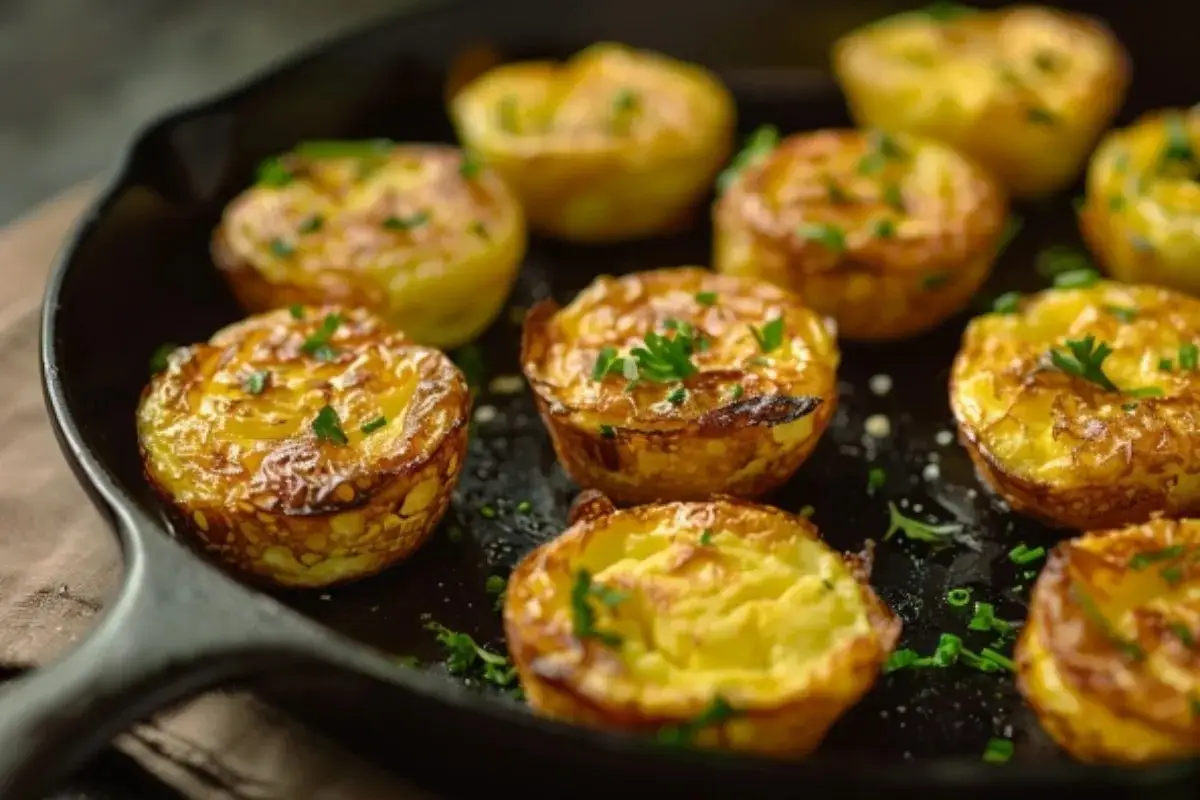Egg bites have become a staple breakfast option for many due to their convenience, versatility, and nutritional value. Perfect for meal prepping or a quick snack, egg bites are easy to make at home with the right tools. But have you ever wondered why your egg bites aren’t turning out as fluffy or delicious as you’d like? The secret often lies in choosing the best pan for egg bites. In this comprehensive guide, we’ll explore various types of pans that can be used for making egg bites, provide a comparison of their features, and share essential tips to help you achieve the perfect results every time.
Why Your Pan Choice Matters for Perfect Egg Bites
When it comes to making egg bites, the pan you choose can significantly affect the texture, flavor, and appearance of the final product. A good pan ensures even heat distribution, which is essential for cooking the eggs uniformly. It also affects the ease of removal, the amount of cleaning required, and the overall cooking experience. Using the wrong pan can lead to uneven cooking, sticking, or even burnt edges. Therefore, selecting the right pan is crucial to achieving a consistent, tender texture in your egg bites.
If you’re looking for tips on perfecting your egg bite recipes, consider checking out this guide on perfect egg bites, recipes, tips, and variations. Additionally, for specific advice on using different types of liners, the article on muffin liners for egg bites offers valuable insights.
Top Pans for Cooking Delicious Egg Bites

1. Muffin Tins: The Classic Choice
Muffin tins are the most common choice for making egg bites. Their size and shape make them perfect for portion control, and they are readily available in most households. Muffin tins typically come in metal or silicone varieties, each with unique advantages and disadvantages.
- Pros:
- Convenient Size: Muffin tins create uniformly sized portions that are ideal for meal prepping.
- Affordable: Most muffin tins are inexpensive and can be found in almost any kitchen store.
- Versatile: Suitable for baking a variety of items beyond egg bites, such as cupcakes or mini meatloaves.
- Cons:
- Sticking Issues: Egg bites can stick to metal muffin tins, even with proper greasing. Using silicone muffin tins can help mitigate this issue.
- Limited Flexibility: Removing egg bites from metal muffin tins without damaging them can be challenging.
To learn more about effectively using muffin tins, especially the best types of liners to use, check out muffin liners for egg bites.
2. Silicone Molds: The Flexible Favorite
Silicone molds have become increasingly popular for making egg bites due to their non-stick properties and flexibility. These molds are perfect for making egg bites in an Instant Pot or a conventional oven, offering ease of use and excellent results.
- Pros:
- Non-Stick Surface: Silicone molds are naturally non-stick, making it easy to remove egg bites without any mess.
- Flexible and Easy to Clean: The flexibility of silicone molds allows for easy storage, and they are dishwasher-safe.
- Even Cooking: Silicone molds provide even heat distribution, which is essential for consistent cooking.
- Cons:
- Requires Support: Silicone molds can be flimsy, requiring a metal tray or baking sheet for support.
- Durability Concerns: After extended use, silicone molds may become less effective and need to be replaced.
3. Cast Iron Skillets: For a Unique Texture
A cast iron skillet is perfect for those who enjoy a rustic appearance and unique texture in their egg bites. Cast iron skillets are known for their excellent heat retention and distribution, which can add a crispy edge to your egg bites that many people love.
- Pros:
- Superior Heat Retention: Cast iron skillets hold heat exceptionally well, ensuring that the egg bites cook evenly and thoroughly.
- Crispy Texture: The skillet’s ability to retain high heat can add a crispy edge to the egg bites, enhancing their flavor.
- Versatile: Cast iron skillets can be used on the stovetop, in the oven, or over a campfire, making them highly versatile.
- Cons:
- Heavy and Requires Maintenance: Cast iron skillets are heavy and require regular seasoning to maintain their non-stick properties.
- Limited to Single Batches: Due to their size, cast iron skillets may not be ideal for making large batches of egg bites.
Learn more about using cast iron skillets for cooking and how to maintain them for optimal performance.
4. Stainless Steel Pans: For the Purist
Stainless steel pans are a less common choice for making egg bites but are favored by those who prefer to avoid non-stick coatings or silicone. These pans offer good heat distribution and are durable, making them a long-lasting option in the kitchen.
- Pros:
- Durable and Long-Lasting: Stainless steel pans are incredibly durable and can withstand high temperatures without damage.
- Good Heat Distribution: They provide even heat distribution, which is essential for consistent cooking.
- Non-Reactive Surface: Stainless steel does not react with acidic foods, making it safe for all types of recipes.
- Cons:
- Sticking Issues: Egg bites may stick to the surface if not properly greased or cooked with adequate fats.
- Not Non-Stick: Requires more careful cooking and attention compared to non-stick or silicone pans.
5. Ceramic Pans: For a Non-Toxic, Non-Stick Option
Ceramic pans are gaining popularity for their non-toxic, non-stick surfaces. They provide a good alternative to traditional non-stick pans and are easy to clean.
- Pros:
- Non-Toxic Surface: Ceramic pans are free from PFOA, PTFE, and other chemicals commonly found in non-stick coatings.
- Non-Stick Properties: They offer good non-stick capabilities, making them ideal for egg bites.
- Easy to Clean: Most ceramic pans are dishwasher-safe and easy to clean by hand.
- Cons:
- Fragile: Ceramic coatings can chip or crack over time, reducing their effectiveness.
- Less Common for Egg Bites: Not typically used for egg bites, so finding the right size and shape may be more challenging.
6. Microwave-Safe Containers: For Quick and Easy Egg Bites
Microwave-safe containers are a great option for those who want to prepare egg bites quickly without the need for an oven. While they may not produce the same texture as oven-baked bites, they are perfect for a quick snack or breakfast on the go.
- Pros:
- Quick and Convenient: Cooking egg bites in the microwave takes only a few minutes, making it ideal for busy mornings.
- Minimal Cleanup: Microwave-safe containers are usually easy to clean and dishwasher-safe.
- Accessible: Most people already have microwave-safe containers in their kitchens.
- Cons:
- Texture May Vary: Microwave cooking can result in a different texture compared to oven-baked egg bites.
- Limited Capacity: Not suitable for making large batches at once.
Comparing Popular Pan Options for Homemade Egg Bites

Choosing the best pan for egg bites depends on your specific needs, preferences, and kitchen setup. Here is a comparison table to help you make an informed decision:
| Pan Type | Pros | Cons |
|---|---|---|
| Muffin Tin | Convenient size, affordable, versatile | Can cause sticking, limited flexibility |
| Silicone Molds | Non-stick, flexible, easy to clean | Requires support, may wear out over time |
| Cast Iron Skillet | Excellent heat retention, adds flavor, versatile | Heavy, requires maintenance, limited to single batches |
| Stainless Steel Pan | Durable, good heat distribution, non-reactive | Not non-stick, potential sticking issues |
| Ceramic Pan | Non-toxic, non-stick, easy to clean | Fragile coating, less common for egg bites |
| Microwave-Safe Container | Quick, convenient, minimal cleanup | Different texture, limited capacity |
Top Recommended Pans for Making Egg Bites
To create the perfect egg bites, it’s essential to choose a pan that suits your cooking style, kitchen tools, and personal preferences. Here are the top recommendations:
- Best Overall Pan for Egg Bites: Silicone molds offer flexibility, ease of use, and are ideal for both the oven and Instant Pot.
- Best Budget Option: Muffin tins are a great cost-effective choice, especially if you plan to make large quantities.
- Best for Unique Presentation: Cast iron skillets provide a rustic look and a unique, crispy texture that many find delightful.
For additional insights on storing and reheating your egg bites to maintain their quality, check out this comprehensive guide on how to store and reheat egg bites.
Best Tips for Using Different Pans to Make Egg Bites
Making perfect egg bites isn’t just about choosing the right pan; it’s also about using the right techniques. Here are some essential tips for using various pans effectively:
- Proper Greasing: Always grease your pan or molds well to prevent sticking. Even non-stick surfaces can benefit from a light coating of oil or non-stick spray.
- Adjust Cooking Times: Different pans may require different cooking times. Silicone molds, for example, may need a longer baking time due to their heat retention properties, while cast iron skillets may cook faster due to their excellent heat conduction.
- Preheating the Oven: Always preheat your oven to ensure even cooking. Placing your egg bites in a cold oven can result in unevenly cooked bites with an undesirable texture.
- Avoid Overfilling: When using muffin tins or silicone molds, avoid overfilling the compartments. Overfilled molds can cause the egg bites to overflow, leading to a messy appearance and uneven cooking.
- Allow to Cool Before Removing: Let your egg bites cool for a few minutes after baking before removing them from the pan or mold. This helps prevent them from falling apart and allows them to set properly.
Recipes for Egg Bites Using Various Pan Types
If you’re ready to experiment with different pans, here are some popular egg bites recipes tailored for various pans:
1. Starbucks Copycat Egg Bites in Muffin Tin
Mimic the beloved Starbucks egg bites using a classic muffin tin. This recipe is perfect for creating a batch of delicious, portable egg bites. To learn more about using muffin liners effectively, explore muffin liners for egg bites.
- Ingredients:
- 6 large eggs
- 1/2 cup cottage cheese
- 1/2 cup shredded cheese (Gruyère, cheddar, or your choice)
- Salt and pepper to taste
- Optional fillings: diced ham, spinach, bell peppers
- Instructions:
- Preheat your oven to 350°F (175°C).
- Grease a muffin tin or use silicone liners.
- Blend the eggs, cottage cheese, shredded cheese, salt, and pepper until smooth.
- Pour the mixture into the muffin cups, filling them about 3/4 full.
- Add optional fillings.
- Bake for 20-25 minutes or until the egg bites are set and slightly golden on top.
- Let cool for a few minutes before removing from the tin.
2. Low-Carb Egg Bites in Silicone Mold
For a low-carb, high-protein breakfast option, use a silicone mold to create egg bites that are both delicious and easy to make. Silicone molds are great for this recipe because they allow for easy removal and cleanup.
- Ingredients:
- 8 large eggs
- 1/2 cup shredded mozzarella cheese
- 1/4 cup cooked bacon or sausage, crumbled
- 1/4 cup diced bell peppers
- 1/4 cup chopped spinach
- Salt and pepper to taste
- Instructions:
- Preheat your oven to 350°F (175°C) or set your Instant Pot to the “Steam” setting.
- Grease a silicone mold or use silicone muffin cups.
- In a large bowl, whisk together the eggs, cheese, salt, and pepper.
- Stir in the bacon or sausage, bell peppers, and spinach.
- Pour the mixture into the silicone molds, filling them about 3/4 full.
- Bake in the oven for 20-25 minutes or cook in the Instant Pot for 10-12 minutes.
- Let cool slightly before removing from the mold.
3. High-Protein Egg Bites in Cast Iron Skillet
For those who love a hearty, high-protein breakfast, using a cast iron skillet adds a unique flavor and texture to egg bites that you can’t get from other pans.
- Ingredients:
- 6 large eggs
- 1/2 cup Greek yogurt
- 1/2 cup diced chicken breast or turkey
- 1/4 cup diced onions
- 1/4 cup shredded cheese (such as cheddar or feta)
- Fresh herbs (parsley, chives) for garnish
- Instructions:
- Preheat your oven to 375°F (190°C).
- Heat the cast iron skillet over medium heat and lightly grease with oil or butter.
- Sauté the onions until soft, then add the diced chicken or turkey.
- In a separate bowl, whisk together the eggs, Greek yogurt, and cheese.
- Pour the egg mixture over the cooked onions and chicken in the skillet.
- Transfer the skillet to the preheated oven and bake for 15-20 minutes, or until the egg bites are fully set and golden brown.
- Garnish with fresh herbs and serve directly from the skillet.
Common Mistakes to Avoid When Making Egg Bites

Even experienced cooks can make mistakes when preparing egg bites. Here are some common pitfalls to watch out for:
- Overfilling the Molds or Pans: Filling the molds or pans too much can cause the egg mixture to overflow, leading to uneven cooking and a messy appearance.
- Not Preheating the Oven: Always preheat the oven to the recommended temperature to ensure that your egg bites cook evenly.
- Ignoring the Cooking Time: Different pans may require different cooking times. Be sure to check your egg bites periodically to prevent overcooking or undercooking.
- Using the Wrong Type of Pan: Some pans are better suited for egg bites than others. Silicone molds, for example, are ideal for easy removal, while cast iron skillets are perfect for achieving a crispy texture.
Frequently Asked Questions
1. What is the Best Pan Material for Egg Bites?
Silicone molds are often considered the best option due to their non-stick properties, ease of use, and versatility.
2. Can You Make Egg Bites Without a Muffin Tin?
Yes, you can use silicone molds, ceramic ramekins, cast iron skillets, or microwave-safe containers as alternatives to muffin tins.
3. How Do You Prevent Egg Bites from Sticking to the Pan?
Greasing the pan or mold thoroughly, using non-stick sprays, or opting for silicone molds can help prevent sticking.
4. Are Silicone Molds Safe for Cooking Egg Bites?
Yes, silicone molds are made from food-grade silicone, which is heat-resistant and safe for cooking at high temperatures.
5. Can You Use Cast Iron Skillets for Egg Bites?
Absolutely! Cast iron skillets are great for achieving a unique texture and flavor profile, although they require careful maintenance and seasoning.
Conclusion
Choosing the best pan for making egg bites depends on your cooking style, kitchen tools, and taste preferences. Whether you choose silicone molds for ease, muffin tins for affordability, or cast iron skillets for a unique flavor, each option has its unique benefits. Don’t be afraid to experiment with different pans and recipes to find the perfect method that works for you. And remember, for more creative variations and expert tips, be sure to explore our guide on perfect egg bites, recipes, tips, and variations. Enjoy your culinary journey and happy cooking!

